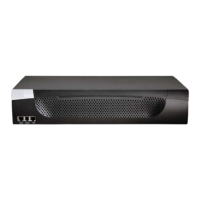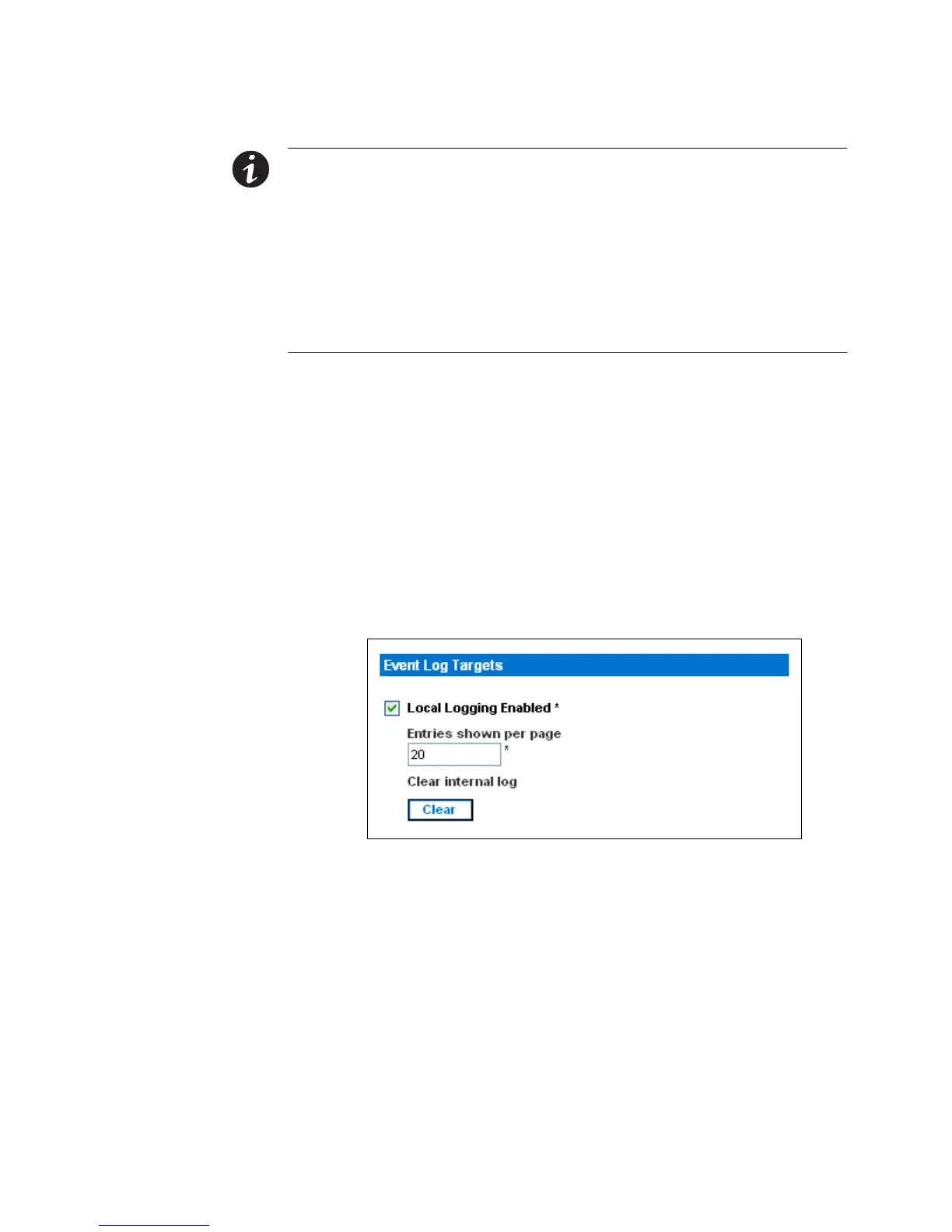USING THE WEB INTERFACE
EATON Managed ePDUt User’s Guide S 164201xxx Rev 1 DRAFT 10−OCT−2008
68
NOTE The ePDU is capable of sending out two types of SNMP traps:
S PDU−specific traps, which are sent if configured in Event Log setting, while the PDU MIBs should be
self explanatory.
S IPMI PET (Platform Event Traps), which are generated in alert configuration and sent out in
IPMI−specific formats, containing raw data.
Details of such traps can be referenced at:
http://www.intel.com/design/servers/ipmi/pdf/IPMIv2_0_rev1_0_E3_markup.pdf
(http://www.intel.com/design/servers/ipmi/pdf/ipmiv2_0_rev1_0_e3_markup.pdf) (Chapter 17.16) and
http://download.intel.com/design/servers/ipmi/PET100.pdf
(http://download.intel.com/design/servers/ipmi/pet100.pdf).
Setting Up Event Logging
By default, the ePDU captures certain system events and saves them in a local
(internal) event log. You can expand the scope of the logging to also capture events in
the NFS, SMTP, and SNMP logs.
Configuring the Local Event Log
To configure the local event log:
1. Select Device Settings, and then select Event Log. The Event Log Settings page
displays. The Local Logging panel displays first. This panel controls the local event
log. See Figure 63.
Figure 63. Local Logging Panel
2. The local event log is enabled by default. To turn it off, clear the Local Logging
Enabled check box.
3. By default, 20 log entries are listed on each page of the local event log when it is
displayed on your screen. To change this, type a different number in the Entries
shown per page field.
4. To clear all events from the local event log:
S Click the Clear button. The button changes to Really Clear and you are
prompted to click it only if you are certain you want to clear the log.
S Click Really Clear to complete the clear operation, or click Cancel to terminate
it.

